5. 2001: A Space Odyssey (1968)
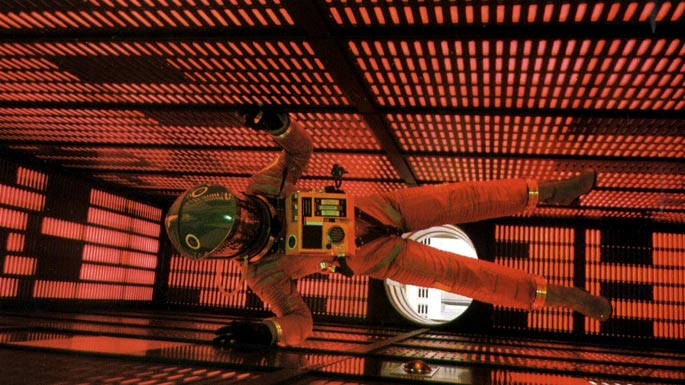
This film certainly has the biggest reputation of any on the list. With its immensity, its music, its cinematography, and its philosophy, this has remained one of the most important films ever made. Kubrick created the perfect meditation on so many things all at once: exploration, man vs machine, evolution, time, and rebirth. This film’s lasting impact can be seen even today, with many direct homages still being done to this colossal work.
The conception of this film is a sprawling tale of exploration and discovery. A small team of men, and a computer, must track the signals of a bizarre monolith to the edges of Saturn. To aid in the sprawling and large feeling of this film, Geoffrey Unsworth constructed so many shots of ships docking, stations spinning, and people floating. These images are all given a large amount of time, and each present the viewer with the space to sit in this atmosphere and slowly understand and experience the massive journey the film depicts. From the construction of a massive centrifuge for the running shot to the unforgettable red hue HAL-9000 gives off as Dave shuts it down, this film’s lasting impact on film and on cinematography are just as potent today as they were in 1968.
4. Mandy (2018)
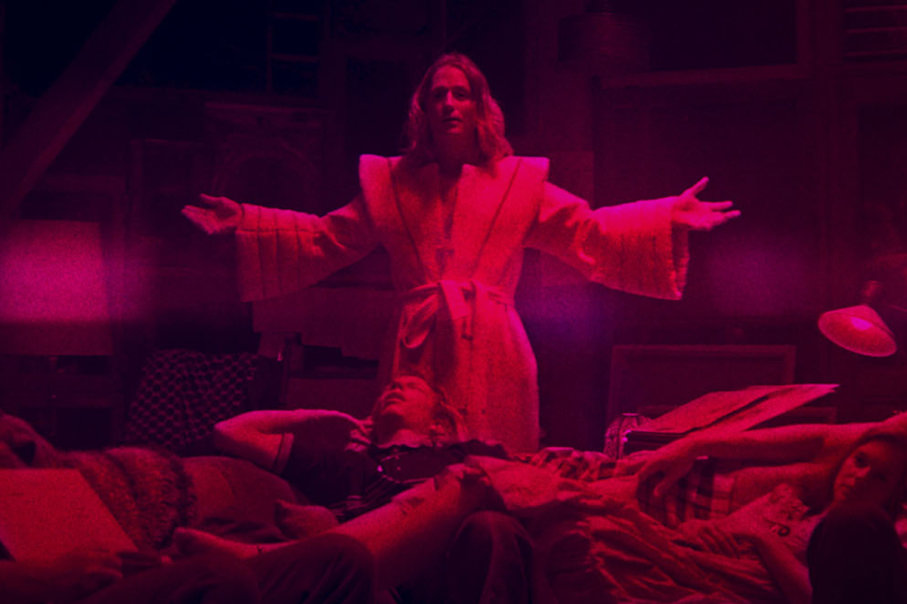
This is the only modern horror film on the list. Panos Cosmatos’ second feature film is a bizarre acid trip thrasher through the eyes of a troubled man, played by none other than Nicholas Cage. After a run in with a cult, he finds his wife murdered and his house destroyed. He then goes on a revenge quest to destroy every single one of their members. Along the way, this cult summons to life a bizarre group of demon-robot-biker henchman whose presence is as wacky as the fight scenes they participate in.
Color, once again, reigns king in this film. Everything is shrouded in this wonderfully intense red; a universal sign for blood, vengeance, anger, and evil, everything this film is trying to depict. One of the most memorable scenes of the film is a moment showing perhaps the most accurate depiction of psychedelic drug use ever put into a film. Nicolas Cage has a run in with the cult, who drug him and bring him into a room where their leader lectures to him. This scene is filled with red, purple, and blue, with every movement of the leader’s hands leaving blue trails against the hazy purple backdrop. This fascinating imagery sticks with the viewer as the rest of the intensity unfolds, creating a film that is equal parts beautiful, bizarre, and unforgettable.
3. The Holy Mountain (1973)
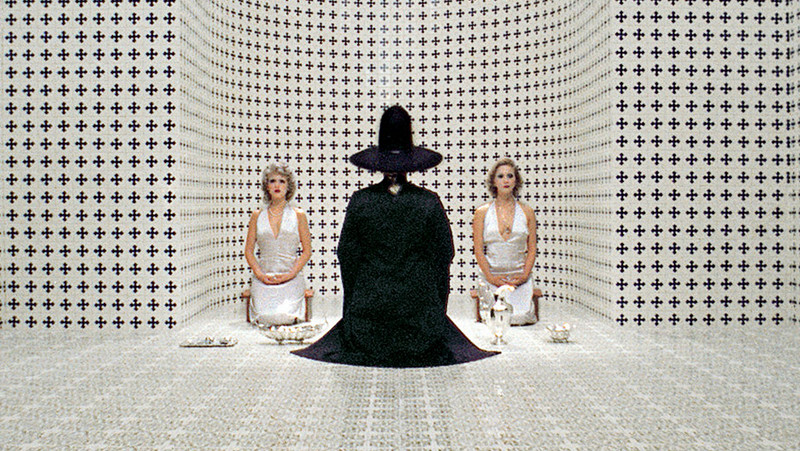
Alejandro Jodorowsky has one of the most eclectic personalities of any filmmaker in the history of cinema. His film The Holy Mountain is the most potent example of this quirkiness. This film loosely follows a figure representing Jesus. This figure travels through many landscapes, many doors, and many worlds, to then eventually find himself at arguably the most effective fourth wall break ever made. This film is a unique and fascinating meditation on man’s ability to seek inner happiness through the simplest of moments in one’s life.
Symmetry, color, and costuming take this film to new heights. When you combine loose religion with extreme attention to detail with Jodorowsky’s mad visions of humanity, you get a wonderfully uncomfortable setting of human nature. Each room he travels into tells a specific thing to him about himself, and each one is perfectly self-contained in its cinematography, and doesn’t overlap with any of the others (while still remaining stylistically linked). This film is everything that conceptual cinema should aspire to be.
2. Paris, Texas (1984)
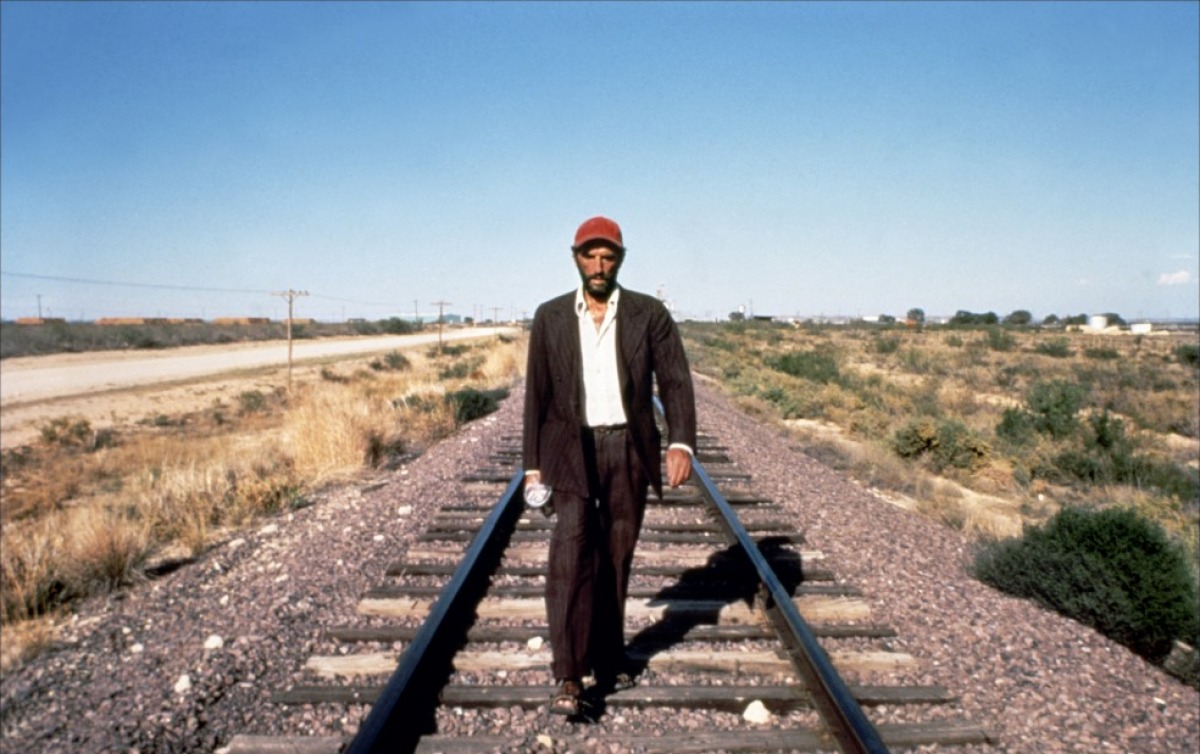
Paris, Texas revolves around one man and his struggle to find himself. Opening with him being discovered after a very long wander through the desert, this film is about him trying to come back to reality, with the help of his brother and his brother’s family. Filled with so many touching moments, Wim Wenders has made a heart-warming reflection on human relationships and human discovery.
Immediately opening with stunning shots of Western America, Wim Wenders and Robby Müller set the tone for the entire rest of the film. Their extreme attention to the composition of each shot create a landscape in which the then mute Harry Dean Stanton to thrive in.
Throughout the opening, there’s an extreme attention to the choices of colors for their outfits, the cars, and the saturations of both the ground and sky so that each shot blends perfectly. The film culminates in perhaps some of the most gorgeous camerawork ever put to screen. When Harry Dean Stanton is finally reunited with his estranged wife (who is working as a stripper), Robby Müller sets up the relationship between the two rooms as if it were a confessional. Harry Dean Stanton tells the story of their parting, with her leaning up against the wall of his room, her soft tears given the entire frame to be felt by the viewer. With such delicate attention to composition and coloring, this is one of the most beautifully shot films ever made.
1. Stalker (1979)
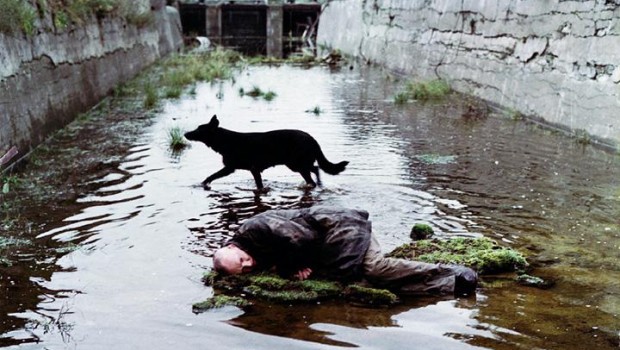
The Great Master of cinema produced seven masterpieces throughout his career, each poetically linked and each unique and perfect in its own right. Stalker, the science fiction epic from 1979, is often seated at the top of the ranks of his films. The film is about a mystical Zone that has been blocked off by the government. A writer and a scientist hire a tracker (called a stalker) to navigate through the Zone that is riddled with traps and get them safely to the center, where there is a room that is said to grant you your most deeply held desires. As is often the case with Tarkovsky, some of the most profound content of the film is the meandering musings of the characters as they move through their own plots.
The imagery of this film is a world of its own. Immediately noticeable and immediately enrapturing, Alexander Knyazhinsky elevated the already extremely lofty film to a new height. Opening in a bar, the first scenes are steeped in an intense brown and orange coloring mystifying the geographical locations that are supposed to be real. It is only once we are in the Zone where we finally see colors as Tarkovsky would’ve seen them.
Further, the creation of the set in the Zone is nothing short of amazing. Taking immense structures like tanks and cars, the team managed to make them come across as if they had been in the Zone for decades, rotting away, leaves, vines, and grass growing all through them. Once into the building where the Room is, each exquisitely crafted shot feels like its own work of art. From the tunnels to the pool to the awe and fame of the mounds, this film contains some of the most breathtaking and memorable moments ever captured on a camera.